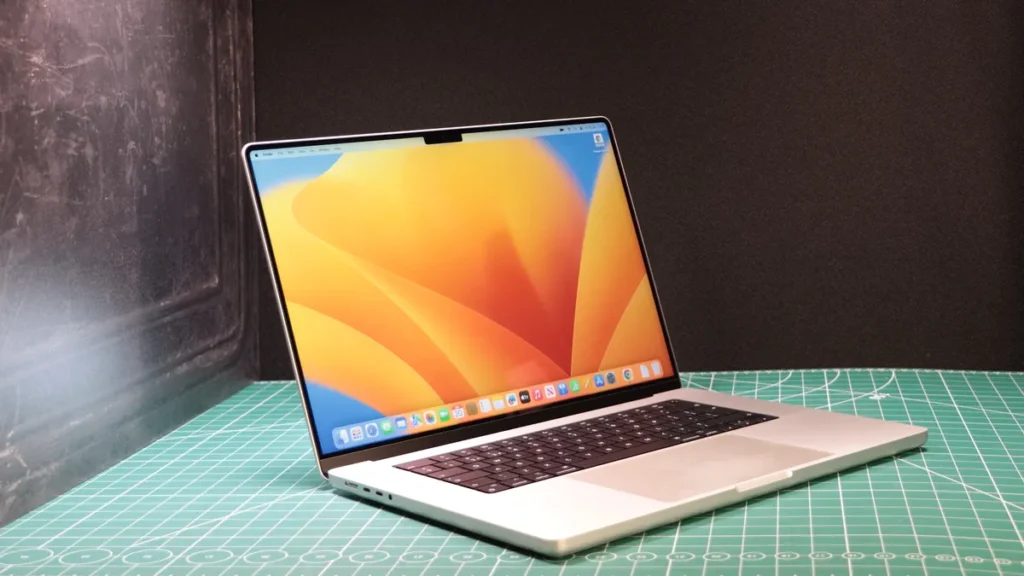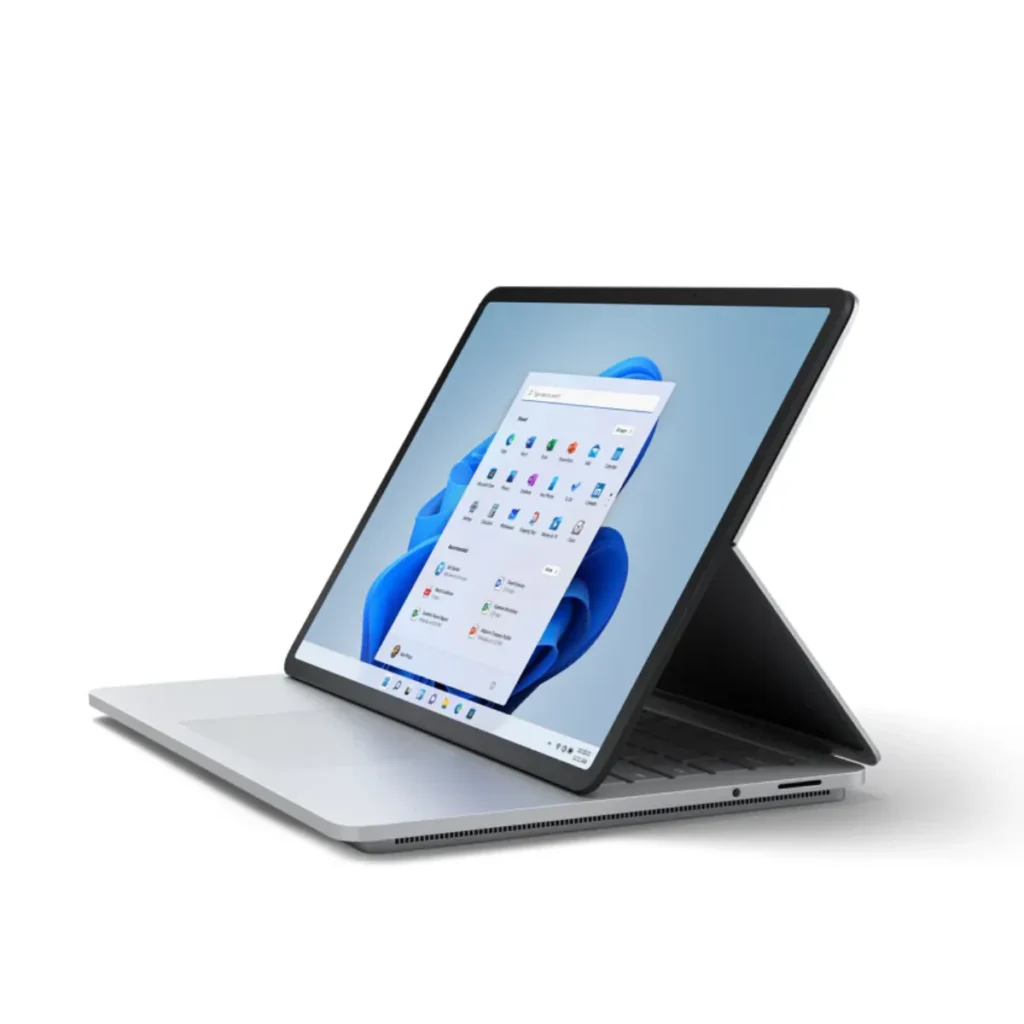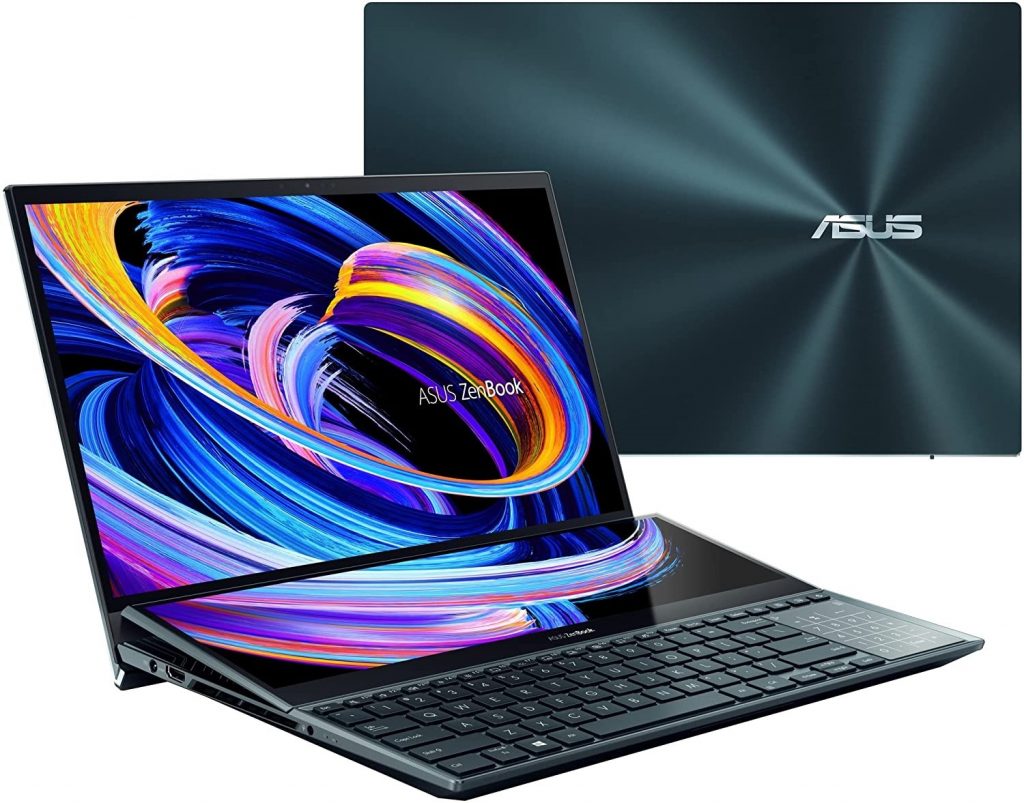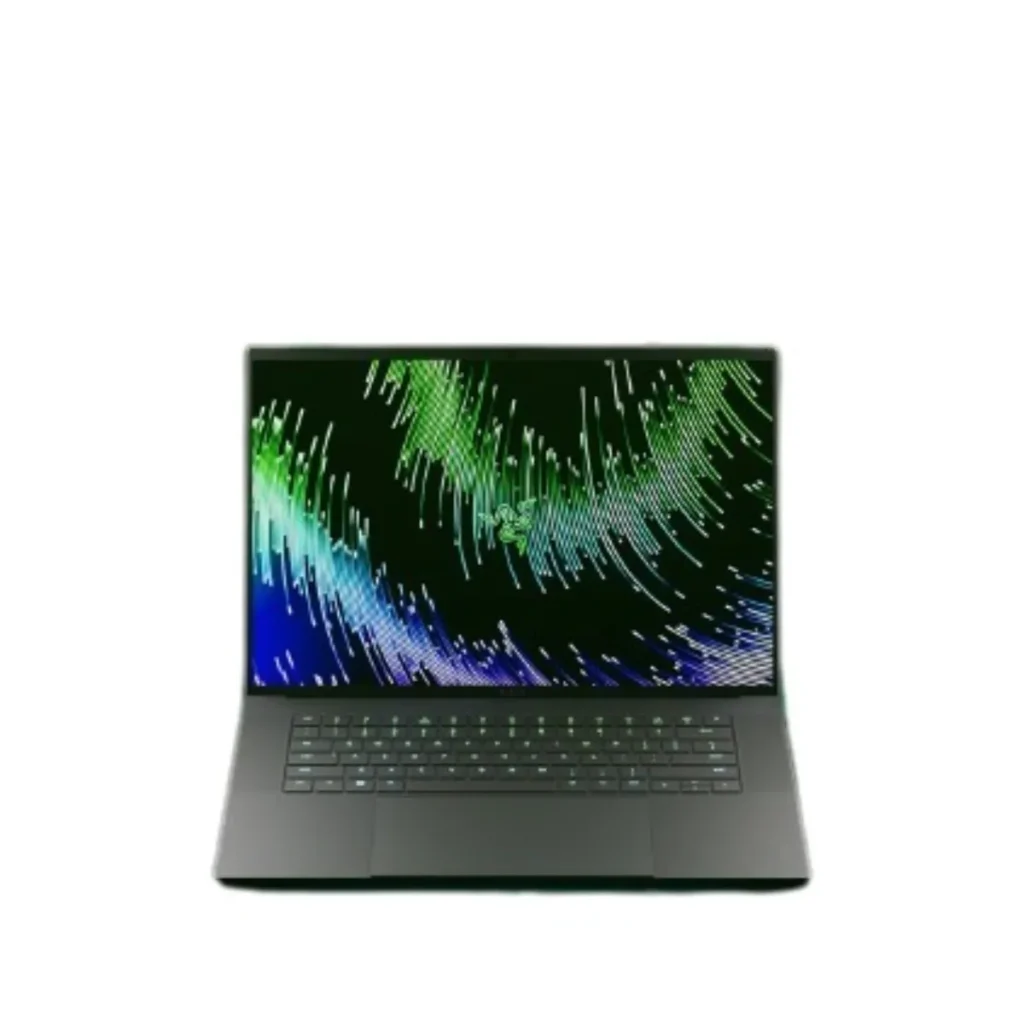The best laptop for Blender requires more power than a standard model. We have shortlisted the top picks for you to make an informed decision when choosing a laptop for blender.
Blender, a free and open-source 3D creation software, was first developed by Ton Roosendaal on January 2, 1994. It is a very helpful software for designers, artists, engineers, and developers to make a significant impact in their work. Creative professionals, driven by passion, trust Blender for its robust capabilities. Over the years, Blender has evolved into a credible platform where ideas come to life and creativity thrives.
If you’re serious about using Blender, you’ll need a laptop that’s more powerful than the average machine. To help you choose the right one, the experts tested a variety of laptops, evaluating their specifications, speed, graphics, and overall performance. Here are our top picks for the best laptops for Blender, ideal for anyone working with 3D modelling software.
Best laptops for Blender – Our Top Picks
1. Apple MacBook Pro 16-inch (2023)

Specifications | |
|---|---|
| CPU | Apple M2 Pro . M2 Max |
| Graphics | Includes a 19-core GPU with a 16-core Neural Engine, capable of scaling up to a 38-core GPU configuration |
| RAM | 16GB (Can be expanded up to 96GB with Apple M2 Max) |
| Screen | 16.2-inch Liquid Retina XDR display |
| Storage | 1TB SSD (Up to 8TB)Dimensions: 14.01 x 9.77 x 0.66 in / 35.57 x 24.81 x 1.68 cm |
The MacBook Pro 16-inch stands out as one of the best laptops for Blender and other creative tasks like video and photo editing. Since version 11.0, Blender has supported the newer Silicon Macs. The powerful M2 Pro CPU excelled in every task during the testing. Even on battery power, it showed only a minor impact on synthetic benchmark results, with no noticeable drop in performance. Unlike some other laptops, the MacBook Pro maintains performance without throttling when on battery. For those who animate on the go, our tests confirmed the advertised battery life of 20 hours to be accurate.
We chose this 1TB SSD (Solid State Drive) as the base hard drive because it provides ample space for installing Blender and storing all your .blend files. This capacity ensures you have enough room for your software and the numerous projects you’ll create.
The testing also showed that loading times were excellent. Both versions can be upgraded to 8TB of storage, but maxing out your SSD will come at a higher cost.
The Retina XDR display is ideal for creating intricate animations, thanks to its ProMotion refresh rate of 120Hz, which ensures everything looks dazzling. While you can choose between 13-inch and 14-inch models, the 16-inch display is the best option for meticulously bringing your digital creations to life.
When considering upgrades for the M2 Pro model, you can boost the memory up to 32GB. However, for those looking at the M2 Max model, it’s possible to increase the memory significantly to 96GB, albeit at an additional cost. In the tests, we found that the M2 Pro’s CPU handled demanding graphics and processing tasks effectively.
For tasks like Blender, it’s recommended to have at least 32GB of RAM and an 8-core CPU. Upgrading to the M2 Max with 96GB of memory will incur an extra cost of around $1400, so it’s essential to consider whether the additional processing power is necessary for your needs.
The M2 Max model offers twice the unified memory bandwidth compared to the M2 Pro, providing up to 400GB/s. This can significantly enhance performance for intensive computing tasks.
Apart from its higher price tag, one significant drawback of choosing a MacBook Pro is its compatibility issues, although these concerns are diminishing over time. For example, Apple introduced its new iOS graphics API ‘Metal’ to macOS in 2015. Following this update, Apple discontinued support for OpenGL. This change rendered GPU rendering impractical for applications like Blender 2.8 and newer versions on Mac systems, compelling users to resort to slower CPU rendering methods.
Apple recently unveiled their latest silicon-based ‘M’ processors, signaling a significant move towards enhancing performance and efficiency. Alongside this announcement, Apple also committed to supporting open-source initiatives, including contributing to projects like Blender. This collaboration has resulted in Blender v3 now fully integrating Apple’s Metal API, catering to both newer and older Intel-based Macs running macOS 13.0 or higher.
2. Microsoft Surface Laptop Studio

Specifications | |
|---|---|
| Processor | 1.3GHz Intel Core i7-11370H (quad-core, 12MB Intel Smart Cache, boosts up to 4.8GHz) |
| Graphics | NVIDIA RTX A2000 Ada |
| RAM | 8 GB |
| Screen | 14.4-inch QHD (2,400 x 1,600) touch |
| Storage | 1TB SSD with fast PCIe, NVMe, M.2 technology, expandable up to 2TB |
| Dimensions | 12.72 inches x 8.98 inches x 0.75 inches (32.3 cm x 22.8 cm x 1.9 cm) |
The original Studio laptop includes 4GB of VRAM, but the latest model with the ‘Ada’ variant offers 8GB of non-ECC VRAM. Interestingly, the absence of error correction is actually beneficial, allowing the GPU to handle continuous, high-intensity tasks more efficiently.
At 14.4 inches, the display might not be huge, but its 2,400×1,600 (3:2) resolution delivers sharp visuals with support for 3.84 million pixels. The 120Hz refresh rate is ideal for rendering images or any task that demands frequent screen refreshes, making it perfect for detailed animations. If you’re new to animation, the Surface Slim Pen 2 is worth considering, as it allows you to draw directly on the Surface screen.
The 1TB NVMe SSD provides ample space for storing your Blender files and projects. Weighing just under 2 kilos, this laptop is perfect for animators who need to design on the go. As for battery life, the original model lasted about 11 hours in the tests.
3. ASUS ZenBook Pro Duo 15 OLED UX582 Laptop

Specifications | |
|---|---|
| Processor | 4.9 GHz intel_core_i9 |
| Graphics | NVIDIA GeForce RTX 3070 |
| RAM | 16 GB DDR4 |
| Screen | 3840 x 2160 pixels |
| Hard Drive | 1 TB SSD |
| Number of USB 3.0 Ports | 1 |
The ASUS ZenBook Pro UX582 is a powerhouse designed for creative professionals, including digital artists, 3D designers, and virtual reality engineers. It serves as a versatile digital canvas for tasks like drawing, texturing, simulation, and match moving. This laptop meets all the essential requirements for running Blender smoothly—no overheating, no battery drain, and no lag. With the ZenBook Pro UX582, you can enjoy top-notch performance while working with Blender.
The ASUS ZenBook Pro Duo 15 OLED UX582 is a dream machine for anyone diving into 3D modeling, motion graphics, or 3D printing. From the moment you start using it, you’ll be impressed by its performance and design. Let’s explore what makes this laptop special.
Powered by the Intel Core i7-10870H, the ZenBook Pro Duo 15 offers impressive specs with eight cores, 16MB of cache, 16 threads, and a turbo speed of 5.0GHz. This processor can handle up to 16GB of DDR4-2933 RAM, making it a powerhouse for demanding tasks.
The laptop features the NVIDIA GeForce RTX 3070 GPU, known for its superior quality, incredible performance, and unmatched speed. This GPU is not only one of the quietest and coolest on the market but also excels in solid ray tracing performance, which is essential for creating stunning 3D models and visual effects in Blender.
The ZenBook Pro Duo 15 OLED comes with a 14-inch 4K matte touchscreen display, complemented by an additional screen above the keyboard, offering a unique and productive workspace. Other key features include the ASUS active stylus pen, 1TB PCIe NVMe M.2 SSD, and 16GB of RAM, making it a top choice for Blender users.
4. Razer Blade 16

Specifications | |
|---|---|
| CPU | 13th Gen Intel Core™ i9-13950HX, with a speed of 5.5 GHz |
| Graphics | NVIDIA GeForce RTX 4090, featuring 16GB of GDDR6 VRAM |
| RAM | 32 GB DDR5-5600MHz |
| Screen | 6-inch UHD+ (3840 x 2400) or FHD+ (1920 x 1200) |
| Storage | 2 TB PCIe 4.0 NVMe M.2 SSD |
| Dimensions | 0.87 x 9.61 x 13.98 inches (22 x 24.44 x 35.5 cm) |
The Razer Blade series is renowned for its high-end gaming capabilities, but it’s also perfect for running demanding animation software like Blender. If you want a laptop designed to deliver top-notch graphics performance and handle resource-intensive tasks effortlessly, the Razer Blade is your ideal choice. Its powerful hardware ensures smooth and efficient rendering, making it a great investment for both gamers and animators who need reliable performance.
The Blade 16 offers impressive customization options. While we’ve highlighted the 16-inch model, you can upgrade to a larger 18-inch screen if you need more space for detailed animations. This flexibility allows you to choose the perfect size for your specific needs, ensuring you have the best setup for your creative work.
One of the standout features of the Razer Blade 16 for animators is its mini-LED display with dual mode support. This indicates that Razer Blade 16 can handle both 4K 120Hz (UHD+) and 1080p 240Hz (FHD) content natively. With this advanced display, your images, 3D renderings, and models will appear exceptionally clear and detailed, far surpassing what you’d get from lower-quality screens that downscale 4K content. This high-resolution capability ensures that your work looks its best and allows for more precise and accurate visualization.
The refresh rate on the Razer Blade 16 is particularly impressive, often requiring an external monitor to achieve similar graphics quality and speed. The only minor drawback is that you need to use Razer’s proprietary app to switch between display modes and then reboot the laptop. Despite this, the convenience of having such high-quality graphics built into the laptop itself makes it a standout choice for serious animators.
The Razer Blade 16 is a top choice for animators, especially when equipped with the NVIDIA GeForce RTX 4090 graphics card featuring 16GB of GDDR6 VRAM. This setup is perfect for running resource-intensive software like Blender, ensuring smooth performance and quick render times. To further enhance your experience, upgrading to 32GB of DDR5 RAM provides the high processing power needed for complex animations. With these powerful specs, the Razer Blade 16 offers the speed and efficiency that professionals demand, making it an excellent investment for serious animators.
Powering a high-end graphics card naturally puts a strain on the battery. In the tests, the Razer Blade 16 lasted about 5 hours on a single charge, which falls short compared to the MacBook Pro’s impressive battery life. However, this laptop offers multiple charging options, including Thunderbolt and USB-C ports, in addition to the official power supply, giving you flexibility when recharging.
If you opt for the Razer Blade 16, you’ll enjoy the speed and efficiency of 2TB (2 x 1TB) NVMe SSDs. These drives are significantly faster than older SATA models, offering ample storage for months of animation work. Plus, since the drives are separate, you can dedicate one to your operating system and the other to archiving older files, ensuring smoother performance and quicker boot times.
Weighing in at 5.40 lbs (2.45 kg), the Razer Blade 16 is heavier than many slimline ultrabooks and MacBook Pros. Yet, its sturdy aluminum chassis is built to withstand the occasional bump or scrape, making it a durable choice for creatives who often work outside the studio.
The standard configuration of this Razer Blade model includes 32 GB of RAM, which is upgradable to 64 GB. While this should be sufficient for most animation projects, those working on extremely resource-intensive tasks may find it limiting.
One potential drawback is the price. A fully spec’d-out Razer Blade 16 can cost more than a comparable Apple device. If you like the Razer series but are working with a tighter budget, you might consider the Razer Blade 15, which offers a more affordable alternative without sacrificing too much in terms of performance.
This laptop’s combination of power, flexibility, and durability makes it a top choice for serious animators and creatives, especially those who need a machine that can handle demanding workloads. Therefore, we have listed it on the best laptops for blender.
FAQs – Best Laptops For Blender
What type of computer is required for using Blender?
Blender depends significantly on the CPU for tasks like rendering and simulations.To ensure smooth performance and efficient task handling, you need a powerful multi-core processor with a high clock speed. At a minimum, aim for a processor with 4 physical cores, but for optimal performance and future-proofing, a CPU with 6 or more cores is ideal.
How do I know if my laptop can run Blender?
To determine if your laptop can run Blender, check the following components against Blender’s system requirements:CPU: Blender requires a multi-core processor. Check your laptop’s specifications to see if it has at least a 4-core CPU. A more powerful processor with 6 or more cores is recommended for improved performance.
GPU: Look at your laptop’s graphics card. Blender works best with a dedicated GPU, especially those from NVIDIA with CUDA cores. Integrated graphics can run Blender, but performance may be limited, especially with complex scenes.
RAM: Ensure your laptop has at least 8 GB of RAM. However, 16 GB or more is recommended for smooth performance, especially when handling large files or complex projects.
Storage: Check if your laptop has an SSD, which is faster than a traditional HDD. You’ll want at least 500 GB of storage to accommodate Blender’s files and projects.
Operating System: Make sure your laptop is running a supported operating system, like Windows 10, macOS, or a recent Linux distribution.
OpenGL: Blender requires a graphics card that supports OpenGL 3.3 or higher. You can check this in your graphics settings or consult your laptop’s specifications.
If your laptop meets or exceeds these requirements, it should be able to run Blender. If it falls short in any area, you may experience slower performance or limitations in what you can achieve with Blender.

Hassan is a digital marketer with a passion for technology. He writes about laptops, PC components, and gaming hardware, offering valuable insights and simplifying complex concepts. Whether you’re upgrading your gaming rig or looking for the best tech tools, Hassan’s articles help you make informed decisions and stay updated with the latest trends.

